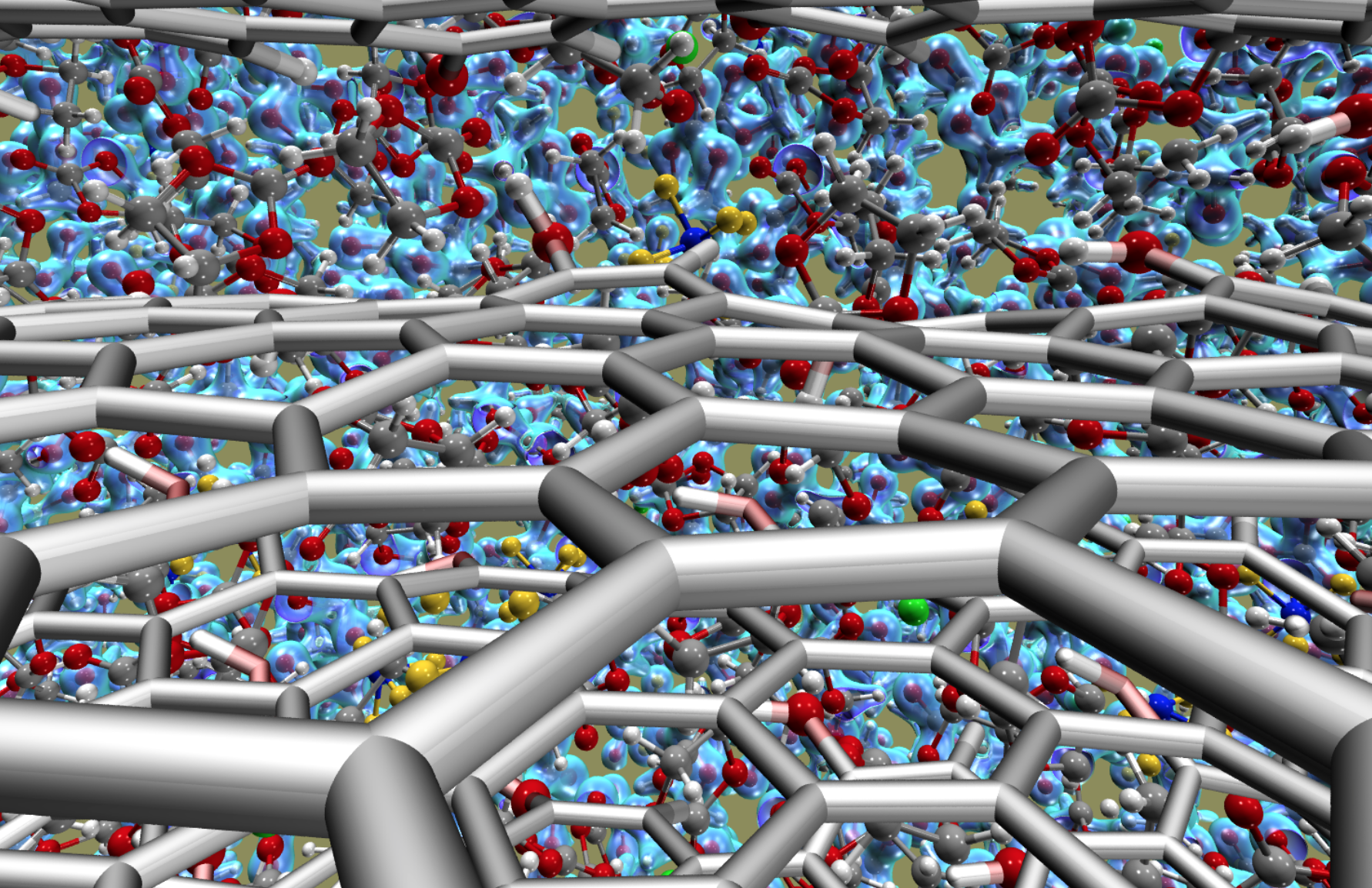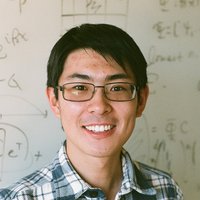Lin Lin’s University of California, Berkeley, website bio describes his research interest as “novel, efficient and reliable numerical algorithms and mathematical software tools for electronic structure theories.” He’s also versed in physics, chemistry and computer science. Put it together, and it adds up to what Lin hopes are new mathematical and supercomputing tools for understanding how electrons interact in atoms.
“This is really a very interdisciplinary challenge,” says Lin, who has a joint appointment as a UC Berkeley assistant professor of applied mathematics and research scientist at the Department of Energy’s Lawrence Berkeley National Laboratory.
Modeling electronic structure requires, in principle, only two fundamental pieces of information: where electrons’ host atoms are located in three-dimensional space and where the atoms appear on the periodic table.
These criteria are so reliable that algorithms based on them can “be rather accurately matched with experiments,” Lin says, suggesting that, before long, that R&D on drugs, advanced materials and other industrial applications can be accelerated in virtual labs.
But between theory and application, there’s a big hurdle: quantum mechanics. To mathematically evaluate electrons requires calculating the many-body (incorporating lots of particles) Schrödinger equation, which is “almost impossible to solve exactly even with the best supercomputer in the world,” Lin laments.
Surmounting the many-body conundrum is a matter of reducing computational cost – “the amount of computer hours one needs to spend on evaluating something,” Lin says. The equation’s computational cost becomes excessive beyond about 10 electrons. That rules out studying many important molecules. For example, electron structures of a single large protein molecule run into the tens of thousands of atoms. “That’s why new theories, algorithms and methods are needed.”
Since finishing his Princeton University Ph.D. in 2011, Lin has worked to sidestep the Schrödinger equation, which can be solved with simpler calculations to achieve acceptable accuracy. He’s been aided by a growing portfolio of honors and grants, including in 2017 alone a DOE Early Career Award that provides $154,000 for each of five years and an NSF Faculty Early Career Development (CAREER) award. Last year he also received the Society for Industrial and Applied Mathematics’ first Computational Science and Engineering Early Career Prize, for work within seven years of receiving a doctorate.
A workhorse of the new computational methods is density functional theory, or DFT, the most widely used electronic structure theory in physics and chemistry. DFT’s first initial refers to electron density, which is “a mathematical terminology that describes the probability of finding an electron somewhere,” Lin says.
“From this you can derive equations that are much simpler than the many-body Schrödinger equation,” says Lin, who made DFT a subject of his doctoral dissertation and has spent years “studying this theory and developing good algorithms to solve it.”
Much calculating remains to model proteins and other many-body electron systems.
Although DFT is not exact, it can reduce computational costs of calculating large numbers of quantum-scale particles from exponential scaling to cubic scaling – when, say, electrons increase by a factor of 10 and the computational time increases by a thousand fold. This may sound large, but it’s more manageable than exponential scaling. Since graduate school, Lin and his colleagues have been developing an approach they call PEXSI, for pole expansion and selected inversion method, which can further lower cubic scaling to “at most quadratic scaling,” Lin says – or when a 10-fold increase in the modeled system’s size leads to at most a 100-fold increase in computing time. PEXSI’s been adopted by several electronic structure software packages for physics, chemistry and materials science.
Even with new algorithmic developments, much calculating remains to model proteins and other many-body electron systems. Lin is seeking further cost reductions with other approaches such as quantum embedding theories. One method splits computational tasks using both quantum mechanics and molecular mechanics.
In a 10,000-atom protein, Lin says, “not all atoms are chemically active.” In fact, most aren’t. The interesting parts comprise a “complex system where chemical bonds are forming and breaking. These are very delicate processes that require very accurate quantum mechanical information to describe them correctly.” The rest is “relatively simple, with its atoms mostly vibrating and providing certain electrostatic interactions.”
This means the highest-level supercomputer calculations may need to focus on only, say, tens to hundreds of atoms of an entire molecule, with mechanics calculations that are less accurate but easier to solve for the modeled molecule’s surroundings. Lin is hoping his DOE-supported studies may help computer modeling step into the mesoscale range, “where quantum and classical physics dance together,” he says. The mesoscale, between 10 and 1,000 nanometers, is where quantum computations reach their outer limits and where classical physics with different equations enter. Both kinds of mathematics are needed to better understand complex processes, such as how batteries deteriorate or microscopic cracks migrate.
For instance, a crack begins at the atomic scale “with a very high speed breaking of chemical bonds,” Lin says. “That part requires quantum mechanics to describe.” But crack expansion can encompass “tens of thousands to millions of atoms,” beyond what even an advanced method like PEXSI can tackle.
“My main role is to develop new mathematical theories and algorithms. Hopefully in the future, this will be used to help simulate mesoscale physics.”

